What are the ‘three sisters’? A permaculture expert explores the ancient concept
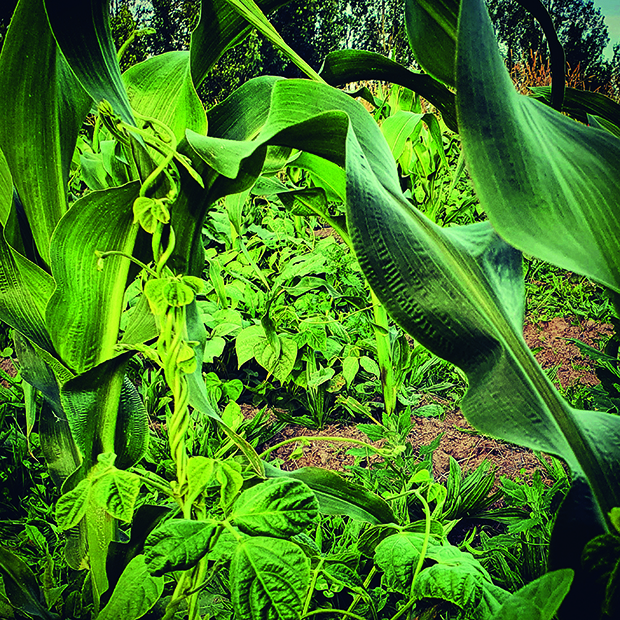
They may grow into a tangled mess, but planting these “three sisters” together can yield an abundance of nutritious, storable food.
Words & photos: Angela Clifford
The chaos garden, polyculture paddock, three sisters field: whatever you want to call it, the jumbling together of collaborative crops into a rummage of growth is a special part of The Food Farm.
There are very few rules in this messy world: the sunflowers, white maize and rambling pumpkins all grow together, with the beans strung between them all like fairy lights. But it’s all part of an ancient theory of symbiotic agriculture. There is a method in the madness.
We transplant the corn and pumpkin as seedlings, and the sunflowers and beans as seeds in the third week of November, after the last frost here in north Canterbury. Then the race is on.
The maize or corn has a head start and muscles out territory with its broad shoulders and arrow-straight stalks. The pumpkins sit for a while, then start clambering over the ground around the base of the corn, taking up space and shading out potential weeds.
The beans and sunflowers eventually poke their heads out of the soil and shoot straight upwards.
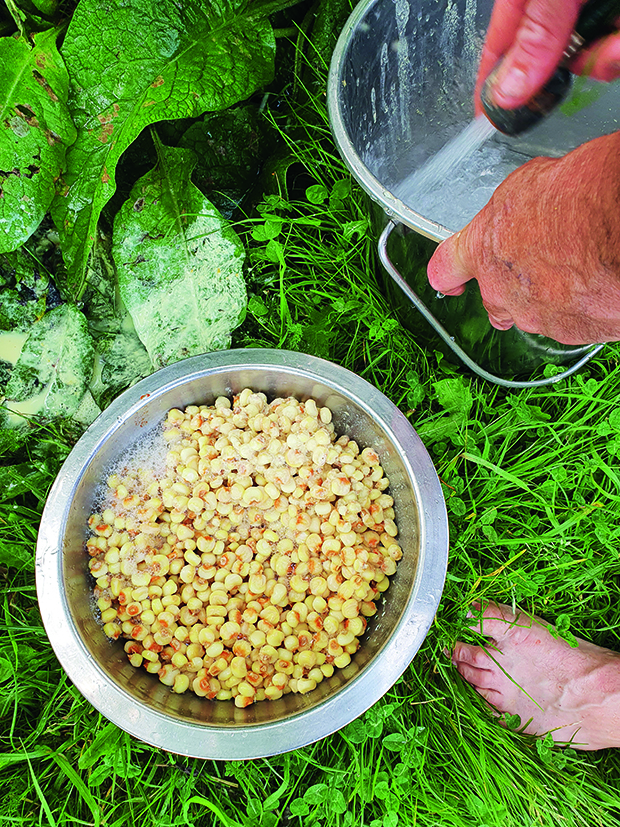
By January it’s a riot: the climbing beans clamber up to the tops of the maize, the pumpkins have made an impenetrable fort and anything random and wild has taken root and joined the party: phacelia, clover, fat hen, wild sown tomatoes and epazote.
In February, with a good amount of heat and light, the corn and sunflowers make their final, triumphant push towards the sun, overcoming any hindrances. Having benefited from the perfect climbing poles of the corn stalks, the pumpkin reciprocates with its root-shading leaves, and the beans with their nitrogen-fixing nodules. The balance has been struck.
As February continues more sunflowers pop out their cheery heads. We stop harvesting the beans and leave them to dry for winter. The pumpkins and maize cobs fatten and the insects – bees and bumbles, butterflies and moths – make the air hum in the sunshine. This part of the farm is so alive. If I’ve lost one of my children (or a Wwoofer) in February, this is often where I find them: sitting quietly in the middle of the field, acknowledging their insignificance in a system that doesn’t need or notice them.
I’ve found myself here too, not having to be anything at all.
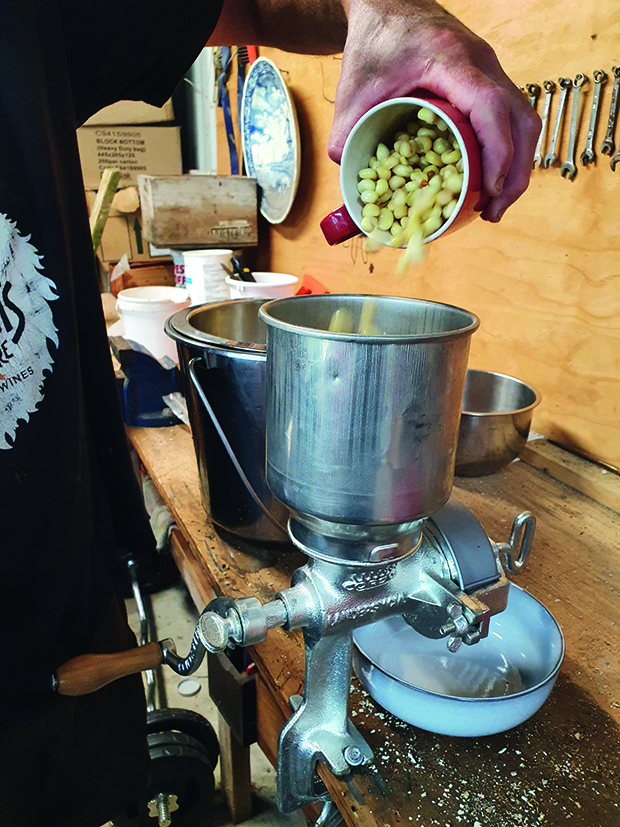
But March arrives and the expectation of harvest comes with it. It’s been an abundant growing season, the fruit trees and their laden branches take all of our attention and the chaos garden is left to its own devices.
By the time we come back to the paddock in April, we’re astounded at the bounty of storable food. From the dried beans to the pumpkins to the maize, we could, quite seriously, live on this produce alone. The beans and corn together are a complete protein, and nutrient-dense pumpkins are low in sugar and bulging with vitamins, minerals and high fibre.
Unsurprisingly, the best dishes involving these crops come from America, where the sisters have been cultivated together for millennia. The most difficult food group to grow on a small farm is carbohydrates and grains. We grow potatoes, taewa, kūmara and sweet corn as the former, but it’s only whilte maize we grow as the latter. We don’t have big harvesting or processing machines, not even a tractor, so corn makes for easy picking compared to the tiny grains and grasses such as wheat, barley or oats. The cobs can be harvested by hand and stored relatively easily, which we do in our pātaka kai or storage house.
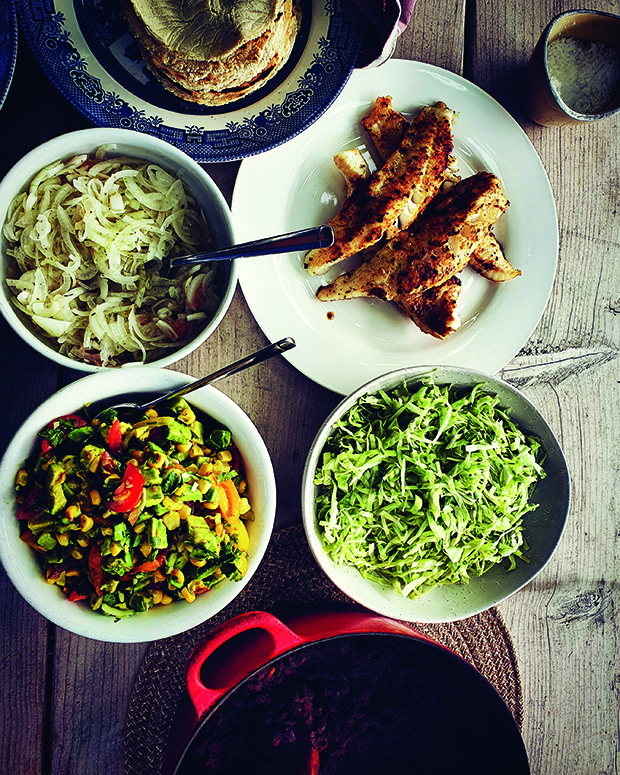
White maize is also called kaanga ma. We originally got the seeds through the Koanga Institute, which in turn came from a koro in Ruatoria. A traditional Māori corn, it has obviously been grown here for a long time.
Unlike sweet corn, we don’t harvest the maize until the cobs have fully dried on the plant. By this time the sugars have converted to starch and the kernels are translucent. This is not a corn to eat fresh, but it stores incredibly well.
When we’re ready, we pull some cobs out of the storehouse and make the most delicious flour of them all: masa flour.
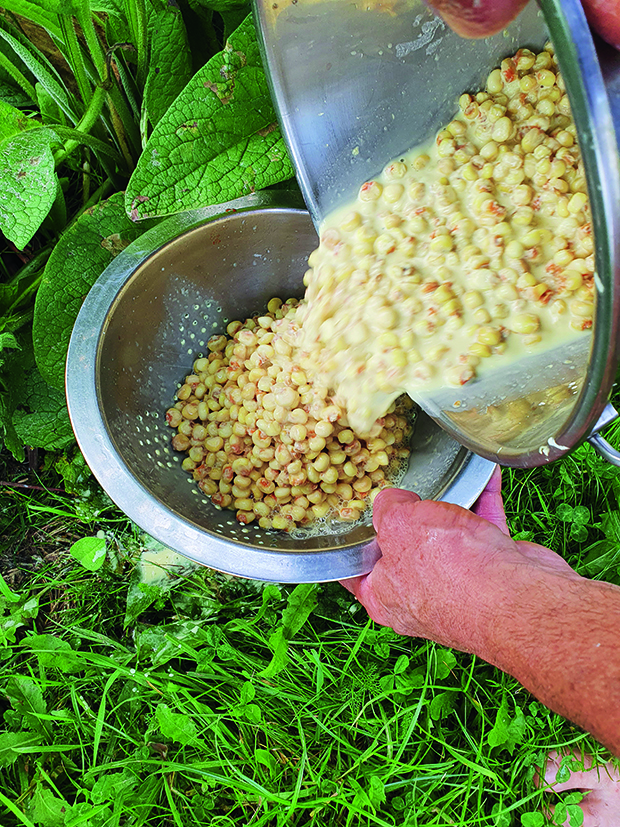
THE INDIGENOUS GENIUS OF THE “THREE SISTERS”
The indigenous peoples of America have cultivated the “three sisters” (maize, beans and pumpkin) together in a system of symbiotic agriculture for millennia. They learned the crops worked together and thrived, with each providing a different benefit to the family:
• The beans take nitrogen from the air and fixes it into the soil;
• The corn provides support, or scaffolding, for the beans to climb;
• The pumpkin provides ground cover that helps the soil retain moisture.
The fourth sister is the sunflower, which supports the beans and distracts birds away from the corn.
The three sisters were so bountiful that they provided the cornerstone of subsistence for the Iroquois people, allowing them to move away from a nomadic lifestyle.
Sources: The Rodale Institute and Handbook of North American Indians
Love this story? Subscribe now!
 This article first appeared in NZ Lifestyle Block Magazine.
This article first appeared in NZ Lifestyle Block Magazine.
